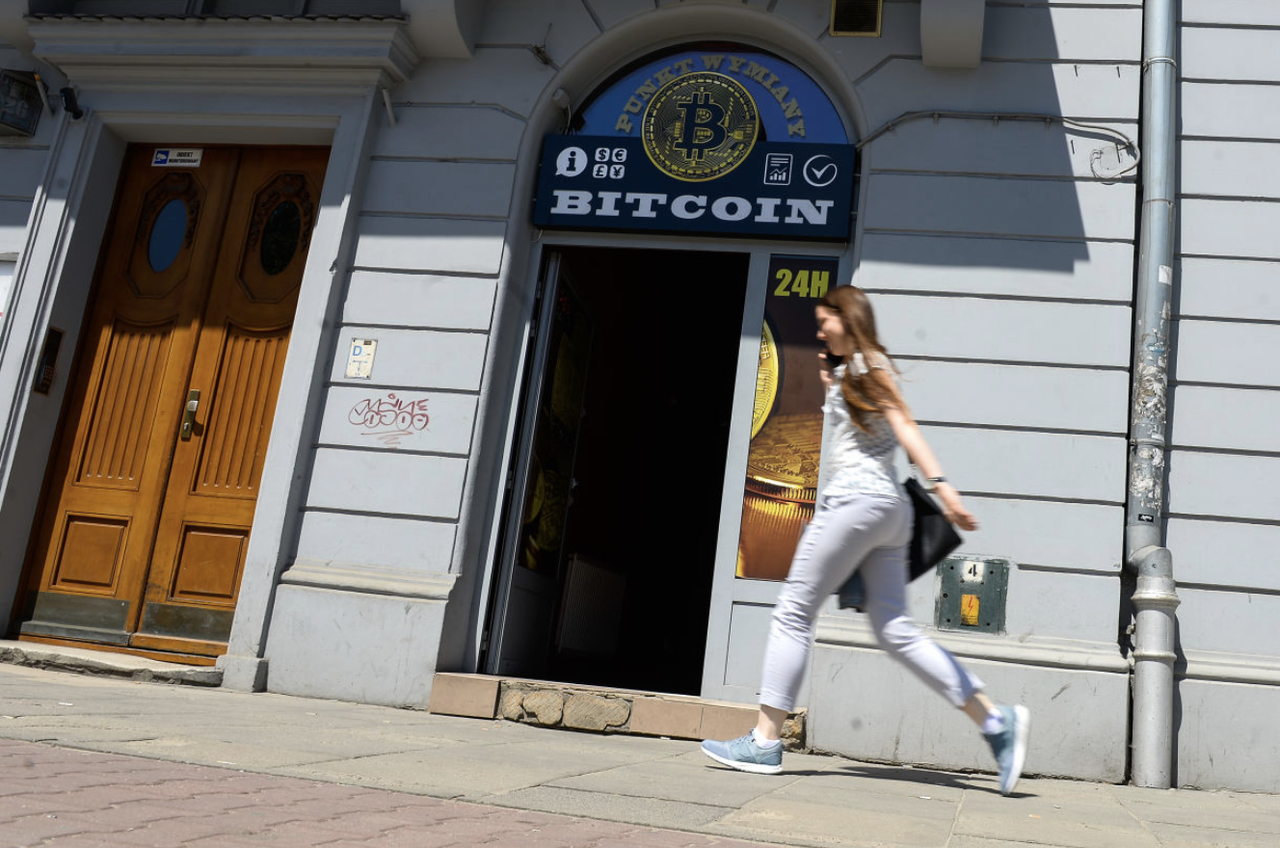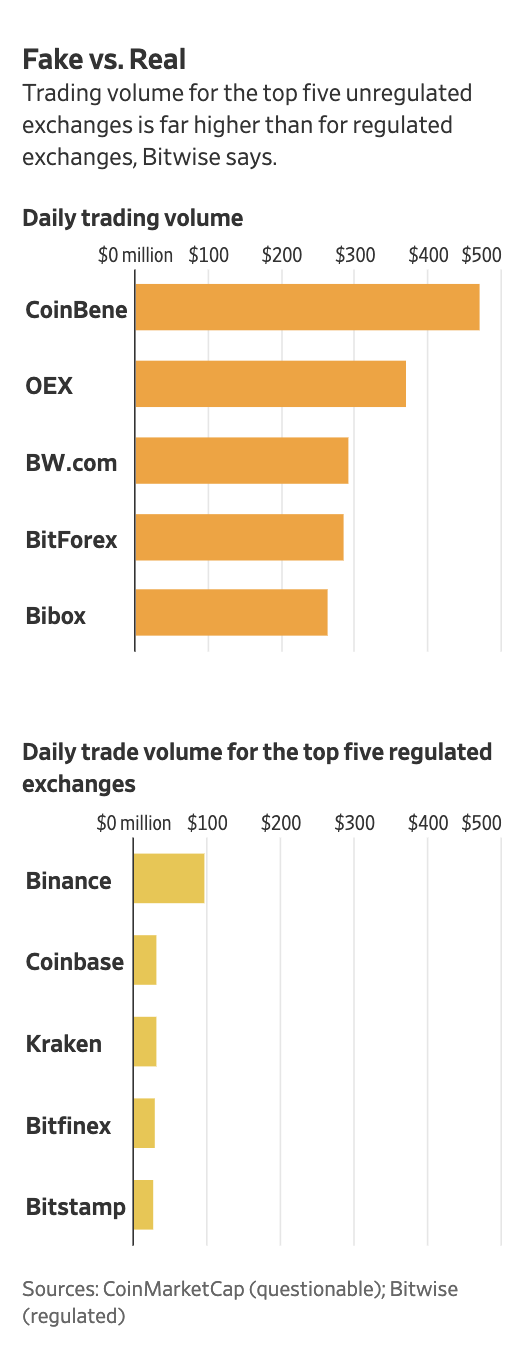


The San Francisco-based company submitted its research to the U.S. Securities and Exchange Commission with an application to launch a bitcoin-based exchange-traded fund. The study, made public Thursday, is an attempt to alleviate the agency’s longstanding concerns that a bitcoin ETF would leave investors exposed to fraud and market manipulation. Bitwise’s fund, if approved, would be based upon the 5% of trading it considers legitimate, said Matthew Hougan, Bitwise’s head of global research. That volume comes from 10 regulated exchanges that can verify that their trading data and customers are real. This slice of the market, he said, is well regulated, transparent and efficient. "I hope everyone sees there is a real market for bitcoin," he said.When Bitwise ran its analysis, it found that 71 of the 81 exchanges it examined harbored activity that appeared fraudulent. Of the $6 billion that changed hands during the study, Bitwise calculated that only $273 million in volume appeared legitimate. The overwhelming majority of the fraudulent activity appeared to take place on newer, unregulated exchanges like Coinbene and BiBox, two of the examples listed by WSJ. Some of the suspicious patterns Bitwise identified included a surprising number of trades being executed within the bid-ask spread, buy and sell orders cancelling each other out, and volumes that were steady throughout the day (rather than registering peaks and valleys during normal trading hours).
Bitwise created a program to collect and analyze trading data across 81 exchanges, looking for patterns that exemplified both real and artificial trading. It concluded that 71 of the 81—or 95% of reported volume—are questionable, with patterns that indicated the trading on them appears manufactured. Of the roughly $6 billion in reported daily volume during four days in March, the firm calculated that about $273 million was legitimate. On regulated exchanges such as Coinbase, Gemini, BitFlyer and Poloniex, trading followed certain patterns, according to the Bitwise report. Trading volume, for example, rose and fell at predictable times coinciding with working and sleeping hours. Smaller trades were more frequent than larger ones, and many were in round numbers. All those patterns reflect how human traders think and act. By contrast, the dozens of unregulated exchanges that have cropped up over the past year show different trading patterns. Buy and sell orders appear in pairs, with one neutralizing the other. Trades are almost always executed within bid and ask prices, indicating a lack of the more haphazard decision-making one would expect from human traders. There are very few small or round-number trades. Volume is consistent across the trading day. The unregulated exchanges also show massive volume. Coinbase, the largest of the regulated exchanges, had average daily volume of around $27 million in the first week of March, when Bitwise collected its data. By comparison, CoinBene, a newer exchange that first appeared in October 2017, reported $480 million in daily volume over the same period. Yet CoinBene’s website attracts far less traffic than Coinbase, which is in 55,097th place by Amazon’s Alexa ranking service, compared with 1,500th for Coinbase.Of course, if such a large percentage of trading in bitcoin, the oldest cryptocurrency, and the one with the broadest appeal, is fraudulent, just imagine what that means for the alt-coin market. Read more at: Zerohedge.com
As society suffers, Big Pharma gets stronger and wealthier
By Ethan Huff // Share
BOMBSHELL: Media, big business, and political establishment colluded to rig 2020 election
By News Editors // Share
MAGA blood libel: Why are they hiding the medical report?
By News Editors // Share
Tai Chi could be the key to fighting age-related memory loss, reports study
By dominguez // Share
Scientists discover 63 new young asteroid families, doubling known count
By kevinhughes // Share
Trump’s alliance with Israel, NDAA powers, and political turmoil raise authoritarianism concerns
By finnheartley // Share
Pfizer deal and AI takeover: Trump’s final solution for American workforce?
By finnheartley // Share
21% of women in their 50s are addicted to ultra-processed foods, study finds
By isabelle // Share











